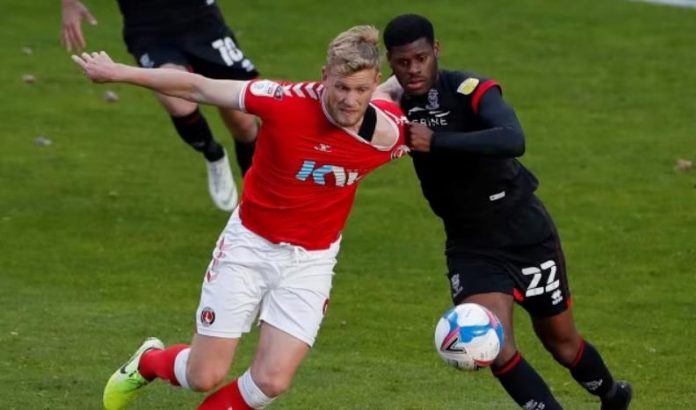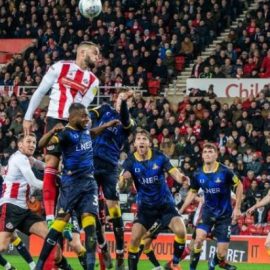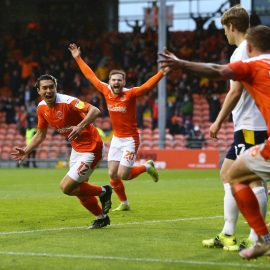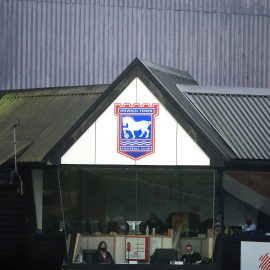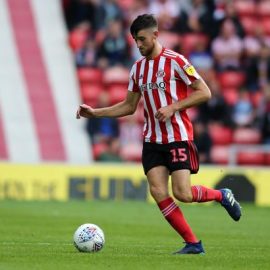The 24th of July, 2007.
A day that will go down in folklore for Brighton fans, as it marks the day that planning permission for their new home in Falmer, East Sussex was finally granted, after over ten years of temporary homes.
Finally, Brighton have the luxury of home comforts, the luxury of a stadium to call their own. A luxury most football fans take for granted.
It’s been a struggle to get this far, however. Many obstacles have stood in Brighton’s way, and much money has been lost.
It all began in 1997, with Brighton’s financial situation looking precarious and bankruptcy becoming increasingly likely.
In an attempt to generate money and pay off the mounting debts that were crippling the club, a controversial decision was made, a decision that to this day has hampered the club’s progress.
The Goldstone ground was sold without the fans consent by the club’s directors, and the land surrounding the stadium was sold to property developers.
Brighton had been left homeless, and almost penniless.
In the club’s final season at the Goldstone ground, with only two games remaining, Brighton were staring at relegation from the Football League to the Conference flat in the face.
Brighton beat Doncaster Rovers 1-0 in the final match at the Goldstone, setting up what was billed as a winner takes all match against the team directly below them, Hereford, on the final day of the season. Brighton had to draw or win to stay up, and despite an early set back, The Seagulls managed to draw 1-1 and send Hereford down in the process.
After ground sharing with Gillingham for the 1997/98 season, Brighton moved into their temporary home, the Withdean stadium, a stadium they reside in to this day. The ground is primarily used as an athletics track, and only holds 8,500 people.
Suffice to say, this was not the long term solution that Seagulls fans craved.
Of course, the move to Falmer was always the long term objective, but that seemed far away at this point.
However, despite this turmoil Brighton prospered, on the pitch at least.
After a few turbulent years at the wrong end of the table, Micky Adams stabilized the club, and delivered promotion from the old Division Three, with the Seagulls going up as champions in 2001. It proved to be Brighton’s most successful season in 13 years.
The momentum continued during the following season, despite the loss of Adams to Leicester, who gave the lack of a permanent stadium and facilities as his reasons for why he traded the Second Division title race for the Premiership relegation dogfight.
Peter Taylor replaced Adams in the hot seat, and Taylor maintained the Seagulls momentum. Brighton ended the season as Division Two champions, and back to back promotions had been achieved.
Suddenly, after the threat of extinction and non league football, Brighton were now only a division away from the promised land of the Premier League.
It had been quite the turn around.
Life in Division One wasn’t quite so plain sailing, however. Taylor left The Seagulls to take on the Hull City job, a club who were below Albion in the footballing pyramid, but well ahead in ambition and facilities.
Once again, Brighton had lost a talented manager, and the lack of good facilities at the club was hampering their progress on the field.
Martin Hinshelwood was promoted from youth team manager and charged with the job of keeping Brighton in the division. Hinshelwood struggled, proceeding over an 11 match winless streak, and was eventually relieved of his duties, with Steve Coppell taking over.
Coppell improved the club’s fortunes, but couldn’t do enough to stop the inevitability of relegation.
Coppell eventually left Brighton for Reading, a club who were once again well ahead in terms of infrastructure, and was replaced by Mark McGhee, who took the Seagulls back up at the first attempt through the playoffs. McGhee even managed to keep the club in the division during the following campaign, with Brighton finishing in 20th position, in what was their highest league position in 14 years.
No small feat with such small crowds, and you felt a new ground was the final piece of the jigsaw to exploit Brighton’s undoubted potential. Afterall, managers were departing because of this, and the club would always struggle with such low income streams.
And sure enough, problems began to arise.
While Brighton City Council approved the stadium plans for Falmer, Lewes District Council fought valiantly against it, believing “the stadium will erode the important gap of open countryside between the built up area of Brighton and Falmer village.”
However, on the 28th October 2005 , the plans for Falmer were finally approved, and the city of Brighton could finally rejoice. The hard work had paid off.
Or so we thought.
Lewes council appealed the decision, citing problems with where the stadium is located within the boundary of the built up area of Brighton. Due to this, the plans were withdrawn, and The Albion were back to square one.
And on the field, the Seagulls were once again struggling. Brighton had been relegated from the Championship, and the following season began with uncertainty.
McGhee was eventually received of his duties, with the inexperienced Dean Wilkins given the chance to revive the club’s fortunes.
And while he did so with moderate success, achieving successive mid-table finishes with a relatively young squad, off the field was where the real success story came.
On Tuesday the 24th of July, 2007, The Secretary of State said yes to Falmer once again, subject to appeal within a 6 week period.
And to the relief of all those concerned, Lewes District Council announced that they would not appeal against the decision.
Relief all round for the city of Brighton, who had fought valiantly for this. All the marches to Falmer and petitions to the MP had now been worth it.
The Brighton faithful had a place to call home, eleven years after their previous home had been taken away from them so cruelly.
So now we come to today. Micky Adams is now back at the helm at Brighton, the very man who kick-started this whole success story on the pitch.
Still relatively young in management terms at 47, Adams could well be the man to provide success for the Albion faithful. With the club hovering just over the relegation zone though, there is work to be done.
And work is due to begin on the Falmer project later this month, which looks ambitious to say the least. The project is due to finish in August 2011, and the new state of the art stadium should hold 22,000 fans.
Some have called these plans overly ambitious, but with the potential of the Sussex area and the size of The Seagulls fan base, which has been shown by their large Wembley followings, Brighton should finally prosper and establish themselves in the Championship.
After many false dawns, exciting times could lie ahead for the city of Brighton and their long suffering fans.
And after ten years of frustration, who could begrudge them that?
Add Sportslens to your Google News Feed!
